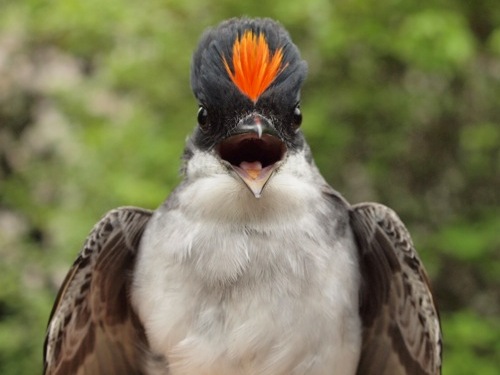|
|
THIS WEEK |
THIS SPRING |
2013 TOTAL |
SITE TOTAL |
|
# birds (and species) banded |
102 (28) |
363 (43) |
731 (48) |
42243 (112) |
# birds (and species) repeat |
21 (10) |
95 (18) |
166 (20) |
8147 (70) |
|
# birds (and species) return |
13 (7) |
54 (16) |
86 (20) |
1295 (38) |
|
# species observed |
88 |
122 |
126 |
208 |
|
# net hours |
407.0 |
1877.0 |
1932.0 |
71221.7 |
|
# birds banded / 100 net hours |
25.1 |
19.3 |
37.8 |
59.3 |
|
|
Note: table does not include nocturnal banding (owls) |
Banders-in-charge: Simon Duval, Gay Gruner
Assistants: Christine Barrie, Nicolas Bernier, David Bird, Salomé Bonnefoi, Emily Boulanger, Vincent Carignan, Luke Currin, David Davey, Rui de Jesus, Josée Dubreuil, Alison Hackney, Lisa Keelty, Barbara MacDuff, Francine Marcoux, Benoit Piquette, Lisa Rosenberger, Catherine Russell, Jillian Slater, Patricia Stotland, Elise Titman, Rodger Titman, Fernanda Triconi
Notes: Traditionally week 7 is when spring migration kicks into high gear at MBO. Over the previous six years, the number of birds banded during week 7 has ranged from 116 to 221, so this year's count of 102 seemed a bit on the low side, although in part that reflected two days with minimal effort due to rain. Nonetheless, there were some big highlights, most notably among shorebirds, with our first ever American Woodcock banded (our 112th species overall), as well as just our second Solitary Sandpiper (the first coming almost five years ago, in week 8 of 2008). The White-breasted Nuthatch banded on May 12 was also a rare treat, just the third one ever in spring, while the Savannah Sparrow on May 9 was the first banded in any season since fall 2008! The other 8 species banded this week that were new for 2013 were Least Flycatcher, Eastern Kingbird, Veery, Chestnut-sided Warbler, Black-throated Blue Warbler, Western Palm Warbler, Brown-headed Cowbird, and Baltimore Oriole. Among observations we also had a remarkable sighting, a blue phase Ross's Goose flying overhead, giving its distinctive call - the 208th species observed at MBO, and not one that we had predicted! Other highlights among the 20 species observed for the first time this year were Least Sandpiper (the first spring record, and only the third overall for MBO), Pine Warbler, and Bobolink. Here's the remainder of the list: ??? Gull, Common Tern, Rock Pigeon, Great Horned Owl, Alder Flycatcher, Great Crested Flycatcher, Veery, Gray Catbird, Tennessee Warbler, Northern Parula, Chestnut-sided Warbler, Cape May Warbler, Black-throated Blue Warbler, Black-throated Green Warbler, Ovenbird, Rose-breasted Grosbeak, and Baltimore Oriole.

May 15 turned out to be a remarkably day for shorebirds, with this Solitary Sandpiper banded the same morning as the American Woodcock. To put this in context, in MBO's 8 previous years of operation, the only other shorebird banded was another Solitary Sandpiper, back in May 2008!
(Photo by Simon Duval)
|
This week’s
top 10 [last week's top 10 in brackets]
#
individuals banded |
mean # individuals observed daily |
1. Red-winged Blackbird (24) [1] |
1. Ring-billed Gull (81) [3] |
2. Yellow-rumped Warbler (15) [-] |
2. Canada Goose (58) [1] |
3. Yellow Warbler (10) [-] |
3. Red-winged Blackbird (56) [2] |
4. White-throated Sparrow (9) [3] |
4. American Crow (24) [4] |
5. Nashville Warbler (6) [7] |
5. Yellow Warbler (14) [-] |
6. Common Yellowthroat (5) [-] |
6. Yellow-rumped Warbler (12) [-] |
7. Northern Waterthrush (4) [-] |
7. Song Sparrow (11) [6] |
7. Chipping Sparrow (4) [7] |
8. Black-capped Chickadee (11) [6] |
7. Common Grackle (4) [7] |
8. Common Grackle (11) [10] |
10. Least Flycatcher (2) [-]
10. Ruby-crowned Kinglet (2) [2]
|
10. White-throated Sparrow (9) [8] |
|
This is the third year in a row that the top two species banded in week 7 have been Red-winged Blackbird and Yellow-rumped Warbler, with the blackbird taking top spot twice in that span (as well as from 2006 through 2009). The advancing season was reflected in the presence of five warbler species in the top ten, actually only the second time that has happened so early in spring (last year there were six species, thanks in part to a five-way tie for 9th place; the species were mostly the same both years, except that Tennessee and Magnolia Warblers made the top ten last year, while Common Yellowthroat missed it). White-throated Sparrow and Ruby-crowned Kinglet have remained dominant at this point in migration in some previous years, but dropped off from last week, especially the kinglet.
For the past four years, Canada Goose has continued its spring reign atop the list of most observed species into week 7, but this year numbers tapered off a bit earlier, and it dropped to second place behind Ring-billed Gull, which dominated week 7 back in 2005 and 2006, but has been less numerous in years since, with daily means for this period ranging from as low as 18 in 2009 to 43 in 2012 - so the mean of 81 this year is quite an increase. Red-winged Blackbird numbers were virtuallly unchanged from last week, but dropped a rank thanks to the increase in gulls; American Crow remained lodged in fourth place. The arrival of the warblers is reflected in this list too, with Yellow and Yellow-rumped entering at fifth and sixth place respectively. The tail end of the White-throated Sparrow migration was enough for that species to cling to the bottom of the top ten this week.
|

Above, an Eastern Kingbird providing a rare great view of its red crest (photo by Simon Duval); below, the first Savannah Sparrow banded at MBO since fall 2008 (photo by Gay Gruner)

|




